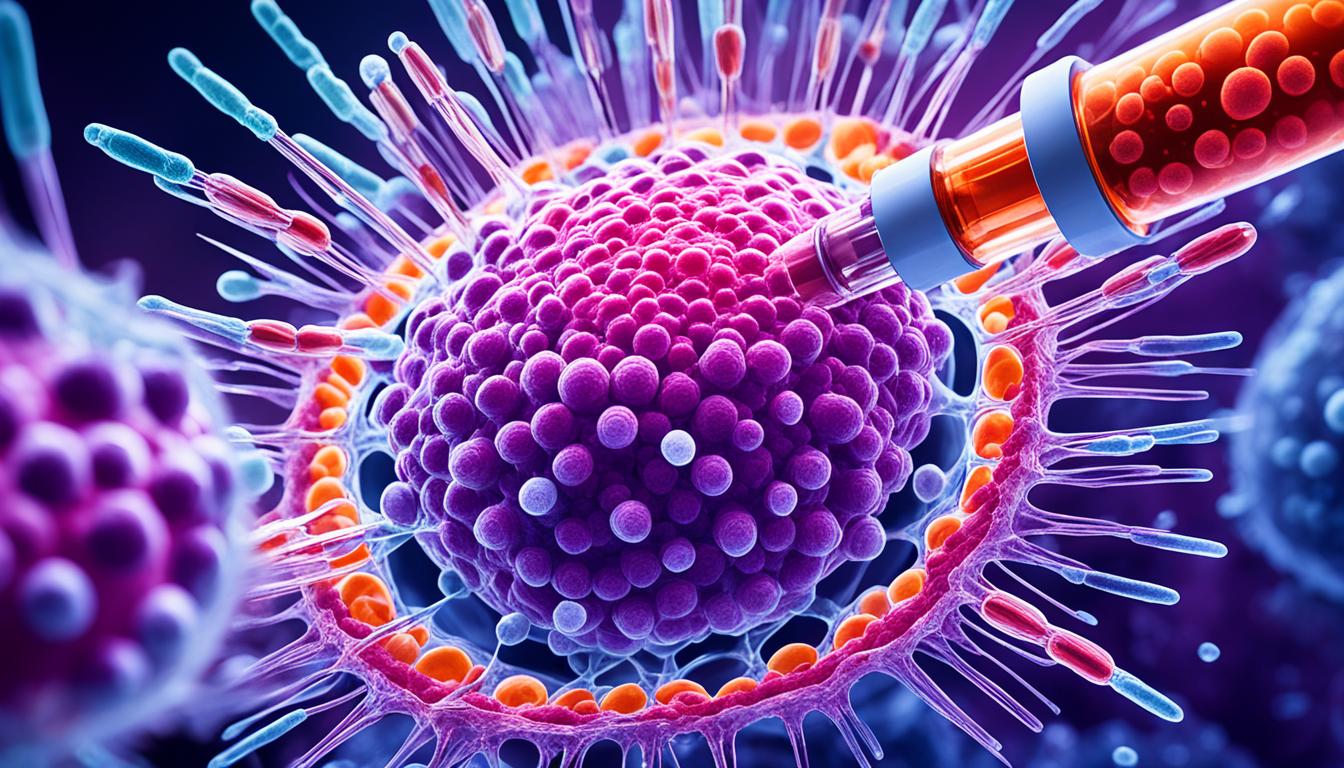Ewing sarcoma is a rare bone cancer found mainly in kids and teens. It most often grows in the legs, chest, or pelvis. It is the second leading type of bone cancer in kids.
The exact cause of Ewing sarcoma is not known. Scientists think it starts with changes in certain genes. These changes cause cells in bones to grow wrong, forming tumors.
Knowing the warning signs of Ewing sarcoma is key. Look out for bone fractures, fevers, under-skin lumps, and pain. If you have pain or swelling in bones, see a doctor right away.
Doctors place Ewing sarcoma into a few types, depending on its spread. This helps plan treatment and understand the patient’s chances of getting better.
To find Ewing sarcoma, doctors review your health history and do exams. They also take images like X-rays, CT scans, and MRIs. A biopsy is needed to confirm cancer, where a small piece of the tumor is cut out and tested.
The treatment mix for Ewing sarcoma often includes chemotherapy, radiation, and sometimes surgery. Stem cell therapy, using cells from donors, is also in the mix. It helps grow new, healthy bone cells and boosts the power of chemo and radiation.
Thanks to early detection and the right treatment, many patients with Ewing sarcoma get better. Predictions are better for those with cancer in just one place. But, doctors are always working to make treatments better for everyone with Ewing sarcoma.
Key Takeaways:
- Ewing sarcoma is a rare form of bone cancer that mainly affects kids and teens.
- Symptoms of Ewing sarcoma include fractures, fevers, and pain.
- To diagnose Ewing sarcoma, doctors use health history, exams, images, and a biopsy.
- Treatment involves chemo, radiation, and sometimes surgery, as well as stem cell therapy.
- Researchers are looking into new treatments, like stem cell therapy, to improve patient outcomes.
Stem Cell Therapy for Ewing Sarcoma – A Promising Treatment Approach
Stem cell therapy is an advanced treatment for Ewing sarcoma. This cancer mostly affects young people. It uses stem cells from donors’ bone marrow to promote the growth of healthy bone cells. This can boost the effects of standard treatments like chemo and radiation.
Today, clinical trials are testing the use of stem cell transplants for Ewing sarcoma. The goal is to understand if this new therapy is safe and how well it works. The first findings are encouraging. They suggest that using stem cells can lower the risk of the cancer coming back. It could also increase how long patients live, giving families new hope.
But, we still need more research to make stem cell therapy better for those with Ewing sarcoma. By adjusting treatment plans to each patient’s specific needs, we can make the therapy even more effective. This also helps reduce any possible harms.
Advantages of Stem Cell Therapy for Ewing Sarcoma
- Enhanced Treatment Efficacy: Stem cell therapy can boost the power of chemotherapy and radiation. This might help more patients with Ewing sarcoma.
- Reduced Risk of Relapse: It could lower the chance of the cancer coming back. This means patients might have a better chance of long-term survival.
- Hope for Metastatic Disease: Stem cell therapy shows a glimpse of hope for cancers that have spread. It may offer new treatments for Ewing sarcoma’s toughest cases.
- Improved Quality of Life: This therapy is not just about fighting cancer. It aims to make sure patients have a good quality of life during and after treatment.
The work on stem cell therapy for Ewing sarcoma is full of promise. It is a major step in changing how we treat cancer. With more research, doctors are getting closer to using this treatment more effectively. The future of treating Ewing sarcoma is looking brighter.
Progress and Challenges in Ewing Sarcoma Treatment
Treatment for Ewing sarcoma has made big steps, leading to better chances of survival. Using several drugs together, called multi-agent chemotherapy, has been key. This method targets the cancer cells, stopping their growth and leading to better treatment results.
Imaging has also improved, helping doctors see Ewing sarcoma earlier. X-rays, CT scans, and MRIs allow them to catch the disease sooner. Early detection means faster treatment, which improves how well treatments work.
Operations and radiation are also key in managing Ewing sarcoma. Surgeries cut out the cancer, while high-dose radiation kills the tumor cells. These local treatments are important in controlling the disease.
But challenges remain. Ewing sarcoma often comes back after treatment. Also, better treatments are needed when the cancer spreads. Research is looking into new ways to treat Ewing sarcoma. This includes drugs that target the cancer more, while doing less harm to the body. Immunotherapies, using the body’s own immune system, are also under study.
Teamwork is vital in treating Ewing sarcoma. Oncologists, surgeons, radiologists, and researchers must work together. By sharing their skills and resources, they can make treatments better and help patients more.

